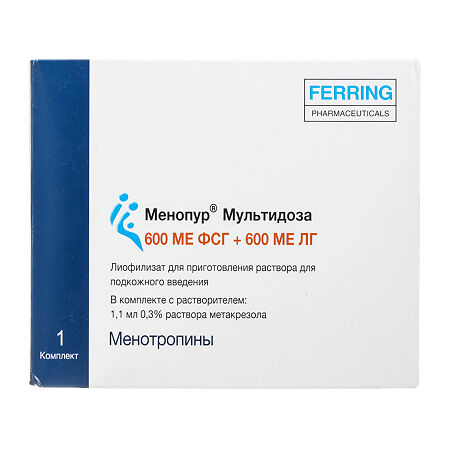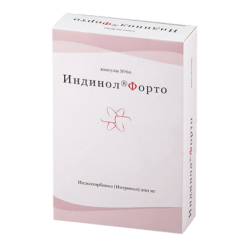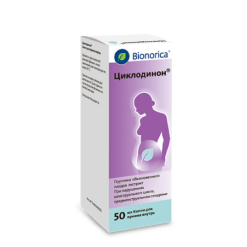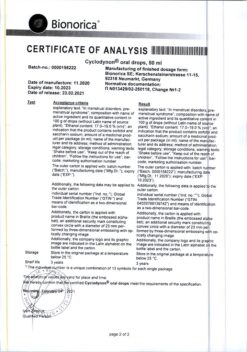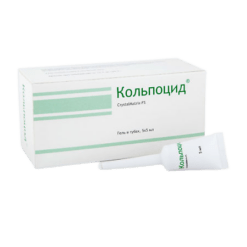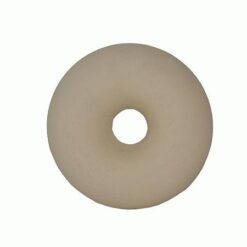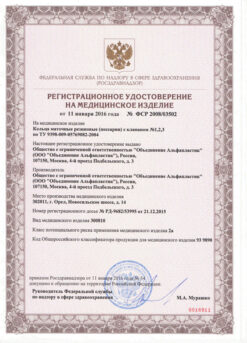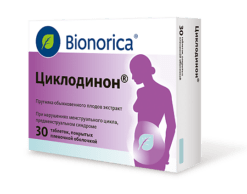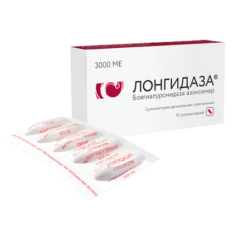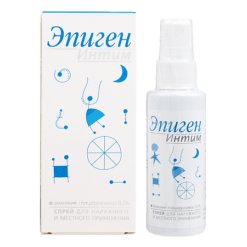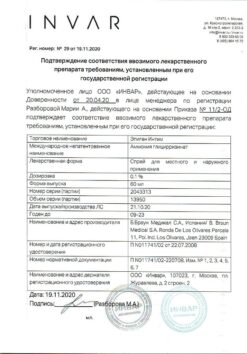No products in the cart.
Menopur Multidose, lyophilizate 600 me fsg+600 me lg
€1.00
Out of stock
(E-mail when Stock is available)
EAN: 7640128547662
SKU: 336269
Categories: Gynecology and Obstetrics, Infertility treatment IVF, Medicine
Description
Pharmacodynamics
The active ingredient in Menopur® Multidose is high purity human menopausal gonadotropin (hMG) derived from the urine of postmenopausal women. It contains follicle stimulating hormone (FSH) and luteinizing hormone (LH).
The target organs for the hormonal effect of hMG in women are the ovaries. hMH stimulates gametogenesis and the synthesis of sex hormones.
FSH is a key factor in the growth and development of follicles at the stage of early folliculogenesis. LH plays an important role in the production of sex hormones by the ovaries and is involved in physiological processes leading to the development of a complete preovulatory follicle. Stimulation of follicular growth under the action of FSH, in the complete absence of LH, ends in the pathological development of the follicle associated with a low concentration of estradiol and the inability to luteinize the neovulatory follicle in response to the normal ovulatory stimulus.
In consideration of the LH effect of increasing sex hormone synthesis, Menopur® Multidose in IVF/ICSI cycles is associated with higher plasma estradiol concentrations than recombinant FSH products. This aspect should be considered when monitoring the response to the use of the drug by the dynamics of changes in estradiol concentrations. No differences in estradiol concentrations were found in the protocols when using low doses of the drug for ovulation induction in patients with an anovulatory cycle.
The target organs for the hormonal effect of hMG in men are the testes. In the testes, FSH induces the maturation of Sertoli cells, which predominantly affects the division of the convoluted tubule cells and the development of spermatozoa. This requires a high intratesticular concentration of androgens, which is achieved by prior therapy with human chorionic gonadotropin (hCG).
Pharmacokinetics
The pharmacokinetic profile of FSH in Menopur® Multidose has been established.
Absorption and distribution
The maximum plasma concentration (Cmaõ) of FSH is reached within 7 hours after subcutaneous (p/k) administration. The volume of distribution determined in healthy female volunteers with reduced receptors after repeated doses of 150 IU for 7 days is 8.9 ± 3.5 IU/L.
Elimation
The elimination half-life on repeated administration is 30 ± 11 h. Excreted primarily by the kidneys.
The curves of LH concentration versus time show an increase in LH concentration after administration of Menopur® Multidose, but these data are insufficient for pharmacokinetic analysis.
There have been no studies of the pharmacokinetic properties of Menopur® Multidose in patients with hepatic or renal impairment.
Indications
Indications
For women:
anovulation (including polycystic ovary syndrome (PCOS) when clomiphene therapy is ineffective);
controlled ovarian hyperstimulation to induce the growth of multiple follicles during the following assisted reproductive technologies (ART): in vitro fertilization with embryo transfer (IVF/ET), gamete intrafallopian transfer (GIFT) and intracytoplasmic sperm injection (ICSI).
For men:
stimulation of spermatogenesis in azoospermia or oligoasthenospermia caused by primary or secondary hypogonadotropic hypogonadism (in combination with human chorionic gonadotropin (hCG) preparations).
Pharmacological effect
Pharmacological effect
Pharmacodynamics
The active ingredient of Menopur® Multidose is highly purified human menopausal gonadotropin (hMG), obtained from the urine of postmenopausal women. The drug contains follicle-stimulating hormone (FSH) and luteinizing hormone (LH).
The target organs for the hormonal effect of hMG in women are the ovaries. HMG stimulates gametogenesis and the synthesis of sex hormones.
FSH is a key factor in the growth and development of follicles at the stage of early folliculogenesis. LH plays an important role in the production of sex hormones by the ovaries and is involved in the physiological processes leading to the development of a full-fledged preovulatory follicle. Stimulation of follicular growth under the influence of FSH, in the complete absence of LH, ends in pathological development of the follicle, associated with low concentrations of estradiol and the inability to luteinize the non-ovulating follicle in response to a normal ovulatory stimulus.
Taking into account the effect of LH, which consists in enhancing the synthesis of sex hormones, the use of Menopur® Multidose in IVF/ICSI cycles is associated with a higher concentration of estradiol in the blood plasma than when using recombinant FSH preparations. This aspect should be taken into account when monitoring the response to the use of the drug based on the dynamics of changes in estradiol concentration. Differences in the concentration of estradiol in the protocols when using low doses of the drug to induce ovulation in patients with an anovulatory cycle were not found.
The target organs for the hormonal effect of hMG in men are the testicles. In the testes, FSH induces the maturation of Sertoli cells, which primarily affects convoluted tubule cell division and sperm development. This requires a high intratesticular concentration of androgens, which is achieved by previous therapy with human chorionic gonadotropin (hCG).
Pharmacokinetics
The pharmacokinetic profile of FSH, which is part of the drug Menopur® Multidose, has been established.
Absorption and distribution
The maximum concentration (Cmax) of FSH in the blood plasma is achieved within 7 hours after subcutaneous (s.c.) administration. The volume of distribution determined in healthy female volunteers with a reduced number of receptors after repeated doses of 150 IU for 7 days is 8.9 ± 3.5 IU/l.
Withdrawal
The half-life after repeated administration is 30 ± 11 hours. It is excreted primarily by the kidneys.
LH concentration versus time curves indicate an increase in LH concentration after administration of Menopur® Multidose, however, the data obtained are insufficient for pharmacokinetic analysis.
The pharmacokinetic properties of Menopur® Multidose have not been studied in patients with impaired liver or kidney function.
Special instructions
Special instructions
Menopur® Multidose has pronounced gonadotropic activity, and therefore, when using the drug, undesirable reactions of varying severity may develop. Treatment should be carried out under the supervision of a doctor experienced in diagnosing and treating infertility!
The use of gonadotropins requires the presence of qualified medical personnel, as well as appropriate equipment. Before prescribing Menopur® Multidose and during treatment, the condition of the ovaries should be monitored (ultrasound and estradiol concentration in blood plasma). It is necessary to use the drug in the lowest effective dose that meets the goals of treatment.
The first injection of the drug should be performed under the direct supervision of a physician.
Women
Before starting to use the drug Menopur® Multidose, it is recommended to diagnose the causes of infertility in both the woman and her partner, as well as establish possible contraindications to pregnancy. Before starting treatment, it is necessary to examine women for the presence of hypothyroidism, adrenal insufficiency, hyperprolactinemia, tumors of the hypothalamic-pituitary region and, if necessary, carry out appropriate treatment.
Conducting controlled stimulation of follicular growth, regardless of the indication for use in women, can lead to enlargement of the ovaries with the development of their hyperstimulation.
If you follow the dosage regimen and method of administration of the drug in combination with monitoring the therapy, it is possible to minimize the risk of the above reactions.
Evaluation of follicular development should be carried out by a physician with appropriate experience.
OHSS
OHSS is a syndrome distinct from uncomplicated ovarian enlargement, the manifestations of which depend on the severity. It includes significant enlargement of the ovaries, high concentrations of estrogen in the blood plasma, and increased vascular permeability, which can lead to the accumulation of fluid in the abdominal, pleural and, rarely, pericardial cavity.
In severe cases of OHSS, symptoms may include abdominal pain, bloating, significant ovarian enlargement, weight gain, shortness of breath, oliguria, and gastrointestinal symptoms including nausea, vomiting, and diarrhea. Clinical examination may reveal hypovolemia, hemoconcentration, electrolyte disturbances, ascites, hemoperitoneum, exudative pleurisy, hydrothorax, acute respiratory distress syndrome and thromboembolic complications.
Ovarian overreaction to gonadotropin administration rarely leads to the development of OHSS unless hCG is administered to stimulate ovulation. Therefore, in case of ovarian hyperstimulation, hCG should not be administered, and the patient should be warned about the need to abstain from sexual intercourse or use barrier methods of contraception for at least 4 days. OHSS can progress rapidly (within 24 hours to several days), becoming a serious iatrogenic complication, so careful monitoring of patients is necessary for at least 2 weeks after hCG administration.
Compliance with the recommended doses of Menopur® Multidose, administration regimen and careful monitoring of therapy can minimize the incidence of ovarian hyperstimulation and multiple pregnancies. When performing ART, aspiration of the contents of all follicles before ovulation can reduce the risk of developing OHSS.
OHSS can be more severe and protracted as pregnancy progresses. Most often, OHSS develops after cessation of treatment with gonadotropins and reaches maximum severity 7-10 days after the end of treatment. OHSS usually resolves spontaneously after the onset of menstruation.
If severe OHSS develops, treatment is stopped, the patient is hospitalized and specific therapy is started.
The development of OHSS is more typical for patients with PCOS.
Multiple pregnancy
In multiple pregnancies, there is an increased risk of adverse maternal and perinatal outcomes.
When using menotropins, multiple pregnancies develop more often than with natural conception. The highest incidence of twin births is noted. To reduce the risk of multiple pregnancies, careful monitoring of the ovarian response to stimulation is recommended.
In the case of ART, the likelihood of a multiple pregnancy depends on the number of embryos introduced, their quality and the age of the patient.
The patient should be warned about the potential risk of multiple pregnancy before infertility treatment is started.
Complications of pregnancy
The frequency of spontaneous abortions and premature births during pregnancy following treatment with Menopur® Multidose is higher than in a healthy woman.
Ectopic pregnancy
Patients with a history of fallopian tube diseases, both during natural conception and during infertility treatment, have a high risk of ectopic pregnancy. The prevalence of ectopic pregnancy after IVF is 2 to 5%, compared to 1 to 1.5% in the general population.
Neoplasms of the reproductive system
There are reports of neoplasms of the ovaries and other organs of the reproductive system, both benign and malignant, in women who have repeatedly received drugs for the treatment of infertility. It is currently unknown whether treatment with gonadotropins increases the baseline risk of these tumors in infertile women.
Congenital malformations
The prevalence of congenital malformations of the fetus when using ART is slightly higher than during natural conception. It is believed that this may be due to the individual characteristics of the parents (maternal age, sperm characteristics) and multiple pregnancies.
Thromboembolic complications
Women with known risk factors for thromboembolic complications, such as personal or family history, obesity (BMI > 30 kg/m2) or thrombophilia, may have an increased risk of venous or arterial thromboembolic complications during or after treatment with gonadotropins. In such cases, the benefits of their use must be weighed against the possible risks. It should be borne in mind that pregnancy itself also increases the risk of developing thromboembolic complications.
Men
The use of Menopur® Multidose in men with high FSH concentrations is ineffective. To assess the effectiveness of treatment, a semen analysis is performed 4-6 months after the start of treatment.
Influence on the ability to drive vehicles and machinery
Studies of the effect of menotropins on the ability to drive vehicles and machines have not been conducted. It is unlikely that Menopur® Multidose has a negative effect on the ability to drive vehicles and use other machinery.
Active ingredient
Active ingredient
Menotropins
Composition
Composition
1 bottle of lyophilisate contains:
active ingredient: menotropins (highly purified human menopausal gonadotropin, hMG) – 600 IU FSH + 600 IU LH or 1200 IU FSH + 1200 IU LH; excipients: lactose monohydrate 21.0 mg, polysorbate-20 0.005 mg, sodium hydrogen phosphate heptahydrate 0.268 mg, phosphoric acid solution 1 M q.s., sodium hydrogen phosphate solution 0.5 M q.s.
1 syringe with solvent contains:
metacresol 3.63 mg, water for injection up to 1.1 ml.
Pregnancy
Pregnancy
The use of Menopur® Multidose is contraindicated during pregnancy and breastfeeding.
Contraindications
Contraindications
hypersensitivity to the components of the drug and solvent;
tumors of the pituitary gland and hypothalamus;
children under 18 years of age;
impaired liver or kidney function.
For women:
ovarian, uterine or breast cancer;
pregnancy and breastfeeding;
vaginal bleeding of unknown etiology;
the presence of cysts or an increase in the size of the ovaries not associated with PCOS;
primary ovarian failure;
abnormal development of the genital organs incompatible with pregnancy;
uterine fibroids incompatible with pregnancy.
For men:
prostate cancer;
testicular tumor;
primary failure of testicular function.
If there is a history of diseases of the thyroid gland and adrenal glands, hyperprolactinemia, tumors of the hypothalamic-pituitary region, appropriate treatment should be carried out before starting hMG therapy.
With caution
In women – the presence of risk factors for the development of thromboembolic complications (individual or family predisposition, obesity with a body mass index (BMI) > 30 kg/m2), thrombophilia); history of fallopian tube diseases.
Side Effects
Side Effects
Frequency of adverse reactions: often (≥ 1/100 to <1/10), uncommon (≥ 1/1000 to <1/100), rare (≥ 1/10000 to <1/1000), frequency unknown (currently there are no data on the prevalence of adverse reactions, registered during post-registration use of the drug).
The most serious and common adverse reactions observed with Menopur® Multidose in clinical studies with an incidence of up to 5% were ovarian hyperstimulation syndrome (OHSS), abdominal pain, headache, bloating and pain at the injection site. The main adverse reactions identified in clinical trials and during post-registration use are listed in the table below.
– Immune system disorders: Hypersensitivity reactions* (Frequency unknown)
– Nervous system disorders: Headache (Common (≥1/100, <1/10)), Dizziness (Uncommon (≥1/1000, <1/100))
– Visual disorders: Transient blindness, diplopia, mydriasis, scotoma, photopsia, transient vitreous opacification, decreased visual clarity (frequency unknown)
– Vascular disorders: Hot flashes (Uncommon (≥1/1000, <1/100)), Venous and arterial thromboembolism (usually with OHSS) (Frequency unknown)
– Gastrointestinal disorders: Abdominal pain, bloating, nausea, abdominal distension (Common), Vomiting, abdominal discomfort, diarrhea (Uncommon)
– Skin and subcutaneous tissue disorders: Acne, skin rashes (Rare), Pruritus, urticaria (Frequency unknown)
– Musculoskeletal and connective tissue disorders: Joint pain, back and neck pain, limb pain (frequency unknown)
– Genital and breast disorders: OHSS**, pelvic pain*** (Common) Ovarian cysts, Breast disorders**** (Uncommon), Ovarian torsion** (Frequency unknown)
– General disorders and disorders at the injection site: Pain at the injection site (Common), Fatigue (Uncommon), Fever, malaise (Frequency unknown)
– Laboratory and instrumental data: Increase in body weight (frequency unknown)
*Rare cases of local or general allergic reactions have been reported, incl. cases of anaphylactic reactions.
**In clinical studies, gastrointestinal disorders, such as bloating and abdominal discomfort, nausea, vomiting and diarrhea, were noted to be associated with the development of OHSS. In cases of severe OHSS, rare complications may include the development of ascites and fluid accumulation in the pelvic cavity, exudative pleurisy, shortness of breath, oliguria, thromboembolic complications and ovarian torsion.
***Pain in the area of the uterine appendages.
**** Pain and discomfort in the mammary glands, engorgement and swelling of the mammary glands, pain in the nipples.
When using menotropins in men, cases of gynecomastia, acne and weight gain have been reported.
If any of the adverse reactions indicated in the instructions worsen, or you notice any other adverse reactions not listed in the instructions, tell your doctor.
Interaction
Interaction
Drug interaction studies have not been conducted with Menopur® Multidose.
The simultaneous use of Menopur® Multidose with clomiphene may enhance the stimulation of follicular growth, despite the lack of clinical data on the combined use of these drugs. Concomitant use with GnRH agonists may require an increase in the dose of Menopur® Multidose to achieve an optimal ovarian response.
The drug should not be mixed in the same syringe with other medications!
Overdose
Overdose
Cases of overdose when taking Menopur® Multidose are unknown, but in such situations the development of OHSS should be expected.
Recommendations for use
Recommendations for use
Instructions for preparing the solution
The solution is prepared immediately before administration by dissolving the lyophilisate in the supplied solvent. The prepared solution can be administered multiple times and can be used for at least 28 days.
Mixing Menopur® Multidose with other medications in the same syringe is not allowed!
Remove the plastic cap from the bottle with lyophilisate. Attach the needle for preparing the solution to the syringe with the solvent and remove the protective cap.
1. Slowly inject the solvent into the vial.
KEEP THE BOTTLE VERTICAL!
2. Gently stir the contents of the bottle in a circular motion until a clear solution is obtained. Dissolution usually occurs in 1-2 minutes. Do not shake! Do not use the solution if undissolved particles or color changes appear!
3. Draw the required amount of solution into the syringe for injection.
4. Wipe the injection site with an alcohol wipe, remove any air bubbles from the syringe and inject the drug.
Storage conditions
Storage conditions
At a temperature of 2-8 °C. Do not freeze. Store in original packaging to protect from light. Store the prepared solution for no more than 28 days at a temperature not exceeding 25 °C. Keep out of the reach of children.
Shelf life
Shelf life
3 years. Do not use after the expiration date stated on the package.
Manufacturer
Manufacturer
Ferring GmbH, Switzerland
Additional information
| Shelf life | 3 years. Do not use after the expiration date stated on the package. |
|---|---|
| Conditions of storage | At a temperature of 2-8 ° C. Do not freeze. Store in the original package to protect from light. Store the prepared solution not more than 28 days at the temperature not more than 25 °C. Keep out of reach of children. |
| Manufacturer | Ferring GmbH, Switzerland |
| Medication form | lyophilizate |
| Brand | Ferring GmbH |
Related products
Gynecology and Obstetrics
Prepidil, intracervical gel 0.5 mg/3 g syringes with catheter
Gynecology and Obstetrics
Buy Menopur Multidose, lyophilizate 600 me fsg+600 me lg with delivery to USA, UK, Europe and over 120 other countries.

